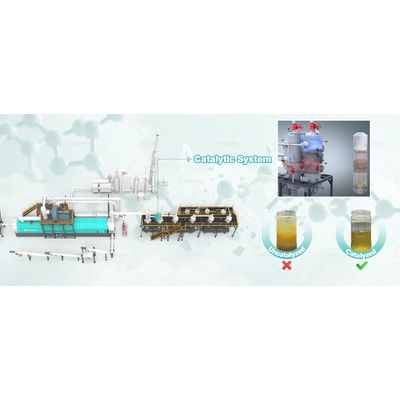

- Home
- Companies
- Beston Group Co., Ltd.
- Articles
- Catalytic Pyrolysis: Improving Oil ...

Catalytic Pyrolysis: Improving Oil Yield and Quality in Industrial Applications
Catalytic pyrolysis has emerged as a pivotal advancement in thermal conversion technologies, particularly for transforming complex hydrocarbon feedstocks into higher-value liquid fuels. By incorporating specialized catalysts into the pyrolysis process, industrial operators can significantly improve oil yield, enhance product quality, and optimize energy efficiency. This methodology is increasingly relevant in facilities processing heterogeneous waste streams, such as plastic, biomass, and mixed municipal refuse.
Mechanism and Process Advantages
Unlike conventional pyrolysis, which relies solely on thermal degradation in an oxygen-deprived environment, catalytic pyrolysis employs materials such as zeolites, silica–alumina, or metal oxides to influence reaction pathways. Catalysts facilitate selective cracking of long-chain hydrocarbons into shorter, more uniform molecules, thereby improving the stability and calorific value of the resulting oil.
Reaction temperatures are often lower than those required for non-catalytic systems, reducing energy input while preserving liquid yield. In waste plastic conversion, catalysts help minimize the production of waxy intermediates and heavy fractions, producing a more refined oil suitable for downstream refining or direct industrial use.
Industrial Integration
A waste plastic to fuel machine for sale in today’s market may incorporate catalytic reactors as a core feature. This integration allows facilities to process post-consumer plastics into market-ready fuels with reduced viscosity, lower sulfur content, and improved combustion properties. Syngas generated during the process can be recycled to heat the reactor, further reducing external fuel demand.
For large-scale operations, modular catalytic units can be retrofitted into existing pyrolysis systems to upgrade their performance without requiring complete infrastructure replacement. This adaptability makes catalytic pyrolysis attractive for operators seeking incremental improvements in output quality without full-scale capital reinvestment.
Product Quality Enhancement
Catalytic processing not only increases liquid yield but also narrows the boiling range of the resulting oil. The outcome is a product with higher stability, reduced impurity levels, and enhanced compatibility with standard refining operations. Catalysts can also be tailored to prioritize specific fractions—such as gasoline-range hydrocarbons, diesel-range distillates, or naphtha—depending on market demand.
In addition, catalytic pyrolysis produces fewer undesirable by-products, reducing the burden on post-treatment systems. This streamlined output profile enhances the overall efficiency of the value chain, from feedstock preparation to final product distribution.
Limitations and Considerations
While the benefits are significant, catalytic pyrolysis presents operational challenges. Catalyst deactivation due to coke deposition, feedstock contamination, or high moisture content necessitates regular regeneration or replacement. The cost of high-performance catalysts can also influence overall project economics, particularly for small and medium-sized facilities.
Effective feedstock pre-sorting, advanced reactor design, and integrated gas cleaning systems are essential to maintaining consistent performance. Without these measures, the advantages of catalytic upgrading can be diminished by process instability or suboptimal yields.
Outlook
Catalytic pyrolysis represents a strategic evolution in waste-to-fuel technologies, bridging the gap between raw pyrolysis output and refinery-grade products. By leveraging catalytic systems within a waste plastic to fuel machine for sale, industries can achieve higher yields, better-quality fuels, and more sustainable operations. As catalyst formulations continue to advance and process integration improves, catalytic pyrolysis is set to play an increasingly central role in industrial-scale waste valorization and alternative fuel production.
